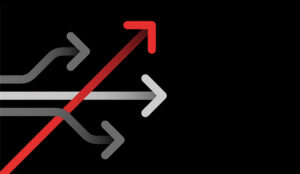Tony Lorentzen at Nuance outlines how during the pandemic, we saw many contact centre leaders forced to adapt to remote customer service—and it’s not a working model that’s going away any time soon.
In this blog post, we look back on Forrester’s remote customer service advice in its COVID-19 response plan and explore how Vodafone offered the perfect real-life example with its contact centre strategy.
If you spent any time on the What’s Next blog last year, you might have seen us talking about Forrester’s COVID-19 response plan. It offered timely, expert advice on how brands can tool up their contact centres to manage remote agents and adapt their customer service strategies to new consumer behaviour.
Now we’re a year on, Forrester’s advice remains just as valuable today as it was during the pandemic. While working from home is no longer a necessity, Forbes research suggests that almost three-quarters of contact centre managers think remote working will be a permanent model for the customer service industry.
If they haven’t already, many contact centres will need to ensure they’re well-equipped to support flexible working models well into the future.
The wisdom of Forrester’s response plan becomes especially clear once you map the analyst’s recommendations to the successful strategies already adopted by leading brands. And worldwide telecommunications provider Vodafone offers a perfect example.
Stage One: The Quick Shift to Remote Working
For the first stage, labelled the “storming” period, Forrester suggested brands begin to deploy agents to work from home, coach supervisors for remote work management, and start to manage their response and queue times.
It’s worth checking whether, even now, your agents have all the tools they need to serve customers wherever they’re working, and your managers have strong visibility of the teams and channels they’re managing.
At the onset of the pandemic, Vodafone faced the monumental challenge of quickly moving its live agents to remote working set-ups, as well as training 2,500 brick-and-mortar staff for online customer service.
Fortunately, the telco already had Live Assist deployed across its contact centres, which meant agents could easily access the brand’s live chat platform from any location. Also, Vodafone had the flexibility to scale its live chat to accommodate its new agents.
Stage Two: Time to Optimise Your New Way of Working
Vodafone’s transition wasn’t without its hurdles. At this point, its contact centre managers realised they didn’t have the same visibility of agent performance while working remotely. Previously, managers would use a physical dashboard that captured real-time KPIs—but they needed a new, digital-first solution for remote teams.
During the second stage, labelled the “optimising” period, Forrester recommended brands focus their analytics efforts on the “now”, and begin to further mature their work-from-home tools and strategies. It’s a chance to look at where remote service impacts your customers, identify any dips in performance, and make any necessary changes to your tools and agent pool.
Having identified the visibility challenge its managers were facing, Vodafone collaborated with a professional services team to find a rapid solution. The team worked with the telco to build a digital KPI dashboard in just two weeks, which uses data captured within its Nuance Live Assist and Call Steering deployments.
The dashboard displays real-time metrics, like customer queue times, NPS scores, and average agent handling time. Using these, contact centre managers can quickly identify any dips in performance and customer satisfaction, and quickly take action to resolve them—whether that means supporting agents with service delivery or deflecting customers to other channels to relieve pressure.
Stage Three: Look Ahead to a Digital-First Future
Forrester’s final stage, the “new normalizing” period, is all about refining the foundations you’ve put in place. The analyst suggested using your new labour models to drive long-term success, and pushing for a digital-first approach to technology across the board. And that advice still remains valuable post-pandemic.
Once again, Vodafone’s story shows the wisdom of Forrester’s recommendations. The telco now allows contact centre agents to work remotely, and it uses the KPI dashboard as a permanent solution—helping contact centre managers maintain full visibility of their teams, wherever they decide to work.
Step Into the “Work From Anywhere” World With AI
Just like Vodafone, many brands over the past 18 months have found solutions to temporary challenges that continue to prove their value today.
As more agents continue to work remotely, and more contact centre leaders face the challenge of managing a remote workforce, we’re offering critical support with our Agent AI solutions—investing in a digital, “work from anywhere” world.
Author: Guest Author
Published On: 22nd Nov 2021
Read more about - Guest Blogs, Nuance















